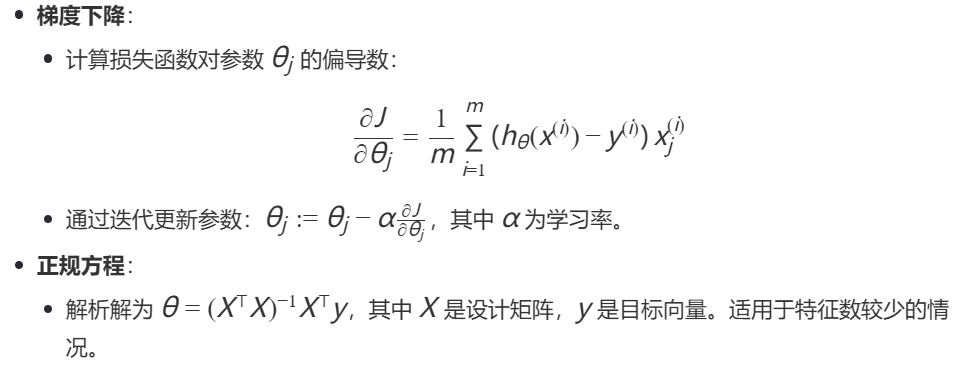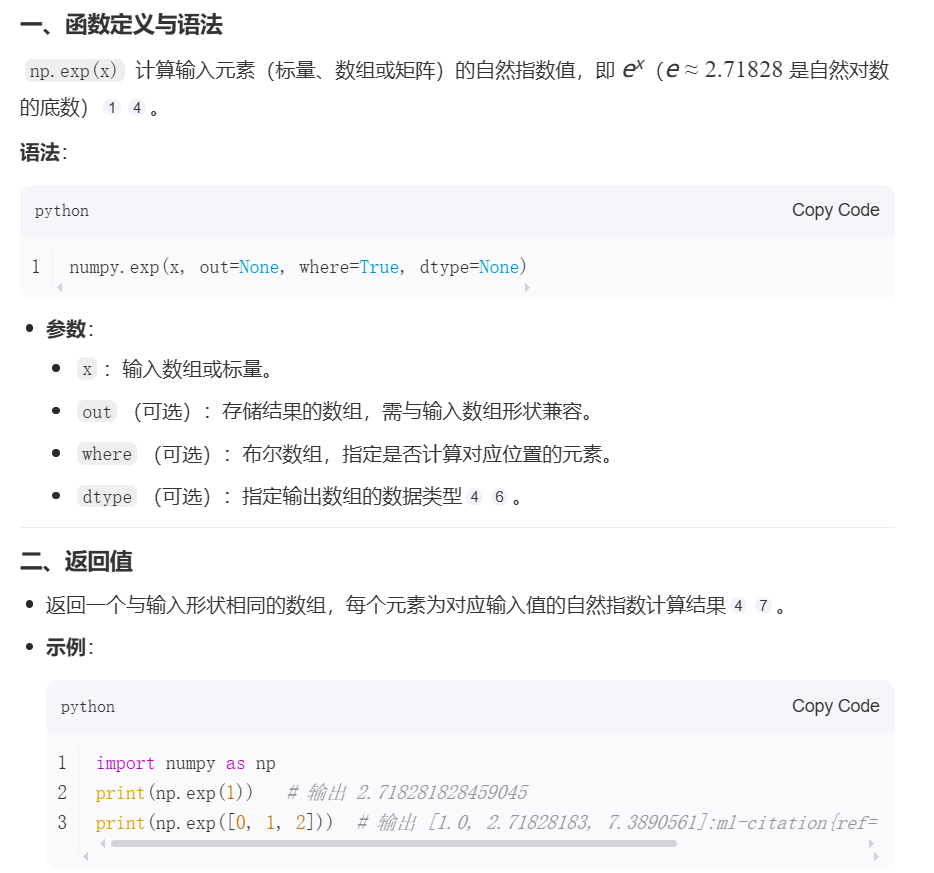3.1.1 线性回归的基本概念

损失函数

梯度下降

3.1.2 向量化加速
python
%matplotlib inline
import math
import time
import numpy as np
import torch
from d2l import torch as d2l
n = 1000000 #本机为了差距明显,选择数据较大,运行时间较长,可选择10000
a = torch.ones(n)
b = torch.ones(n)
class Timer:
def __init__(self):
self.times = [] # 存储每次测量的时间
self.start() # 初始化时自动开始计时
def start(self):
self.tik = time.time() # 记录当前时间戳(开始时间)
def stop(self):
self.times.append(time.time() - self.tik) # 计算并保存时间差
return self.times[-1] # 返回本次测量的时间
def avg(self):
return sum(self.times) / len(self.times) # 平均耗时
def sum(self):
return sum(self.times) # 总耗时
def cumsum(self):
return np.array(self.times).cumsum().tolist() # 累计耗时(用于绘图)
python
c = torch.zeros(n) # 初始化全0张量 c(存储结果)
timer = Timer() # 创建计时器实例
for i in range(n):
c[i] = a[i] + b[i] # 逐个元素相加(慢!)
print(f'{timer.stop():.5f} sec')'19.59485 sec'
python
timer.start()
d = a + b
f'{timer.stop():.5f} sec''0.00470 sec'

3.1.3 正态分布与平方损失
python
import math
import numpy as np
from d2l import torch as d2l
def normal(x, mu, sigma):
p = 1 / math.sqrt(2 * math.pi * sigma ** 2) # 归一化系数
return p * np.exp(-0.5 / sigma ** 2 * (x - mu) ** 2) # 概率密度计算
x = np.arange(-7, 7, 0.01) # 生成 [-7, 7) 区间内步长0.01的数组
params = [(0, 1), (0, 2), (3, 1)] # (mu, sigma) 的组合 (均值, 标准差)
d2l.plot(
x, # x 轴数据
[normal(x, mu, sigma) for mu, sigma in params], # y 轴数据列表(三条曲线)
xlabel='x', # x 轴标签
ylabel='p(x)', # y 轴标签
figsize=(4.5, 2.5), # 图像尺寸(宽,高)
legend=[f'mean {mu}, std {sigma}' for mu, sigma in params] # 图例说明
)

x 是 NumPy 数组,np.exp 支持数组运算,而 math.exp 仅处理标量。
